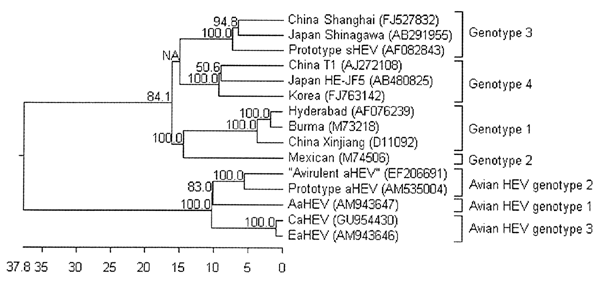Volume 16, Number 9—September 2010
Dispatch
Analysis of Avian Hepatitis E Virus from Chickens, China
Figure 2

Figure 2. Phylogenetic trees based on the near-complete genomic sequences of avian hepatitis E virus (HEV) and 10 human and swine HEV isolates. GenBank accession numbers follow the name of HEV strains. The trees were constructed by the neighbor-joining method with 1,000 bootstrap replicates using Lasergene 7.0 (DNAStar, Madison, WI, USA). The length of each pair of branches represents the distance between sequence pairs; the units at the bottom of the tree indicate the number of substitution events.
1Current affiliation: Northwest A&F University, Yangling, People’s Republic of China.
Page created: August 28, 2011
Page updated: August 28, 2011
Page reviewed: August 28, 2011
The conclusions, findings, and opinions expressed by authors contributing to this journal do not necessarily reflect the official position of the U.S. Department of Health and Human Services, the Public Health Service, the Centers for Disease Control and Prevention, or the authors' affiliated institutions. Use of trade names is for identification only and does not imply endorsement by any of the groups named above.